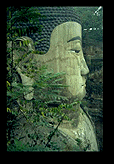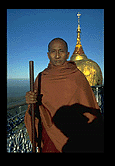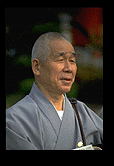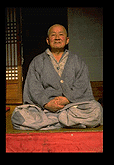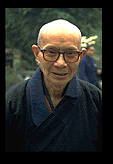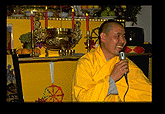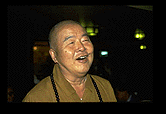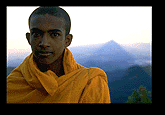
Click on
thumbnail images to view full image:
|
"Be a light unto yourself" said Buddha to his disciples who had asked him in his final hour to make plans to enable the continuity of his order. No single person should lead the followers, but rather the teachings laid out in his talks and speeches, the so-called Dhamma, should become the guiding light of their behavior. The preservation of the teachings was to become the responsibility of the Buddhist community, the Sangha - Sangha means literally "community" in Sanskrit. The followers of the Enlightened One committed themselves to the Buddha, Dhamma and the Sangha. In a narrow sense the Sangha was comprised simply of monks and nuns (Pali: bhikkhu and bhikkhuni) and the novitiates (Pali: samanero and samaneri). In a broader sense, however, it also included all beings who had achieved an insight into the nature of the conditioned and dependent nature of all appearances and who were on the way to release themselves from all worldly desires. The pictures of this exhibition show the life of monks and nuns both in the southern regions of Asia where the Theravada Buddhism is mainly to be found, Sri Lanka, Myanmar, Thailand as well as in the northern regions where the Mahayana Buddhism is centered, China, Korea and Japan. In some other pictures there are also modern, western communities to be seen. Of course these pictures can give only an external representation of the Buddhist traditions. But if one looks very carefully and leaves behind the deficiencies of his former concept of happiness, he will recognize perhaps that the impression which he reads in the relaxed, happy expressions of the followers of the Enlightened One give us the idea that liberation is not to be found in the devotion to worldly joys but can be found on the way to discovering one's true self.
|
| |
|
|
|
|
|
|
